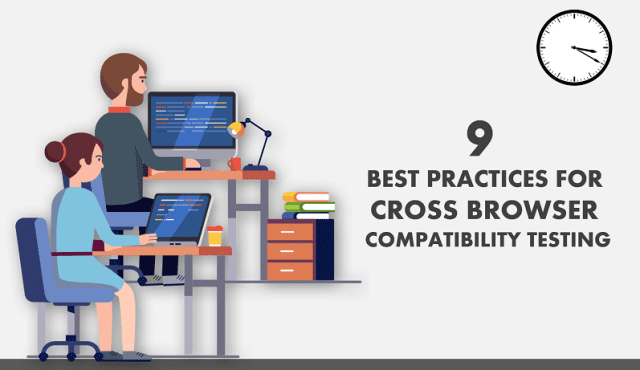
When it comes to web development and testing, cross-browser compatibility testing is a phase that scares both testers as well as developers. Earlier, during the days when IE ruled the World Wide Web, testing a website only in IE was enough. But currently, with more than hundreds of browsers and their different versions in different devices, proper testing is required to ensure that the code is rendered properly in all browsers and end users experience flawless and uninterrupted browsing sessions. Here, we shall discuss the best practices to conduct while executing cross-browser compatibility tests.
Construct a Plan and Research Properly
If the time allotted for testing is short, it is impossible to test a website across all the available browsers. The ideal thing would be to carry out some research on Google Analytics, GS Counter and other analytic tools to find out the most used browser by a specific group of users whom you are targeting and the most used browsers in a specific user zone. Prepare a list and start executing compatibility tests.
Wisely Choose Libraries and Frameworks
Before starting the development, you must keep in mind that latest CSS frameworks may help you with the vivid and dynamic user experience that uses a little resource, but they may not work properly in all browsers. This may result in the user not being able to experience the design. Before including any latest JS or CSS libraries or frameworks, check the guidelines of the browsers you are targeting and ensure that the frameworks are well supported.
Using Cloud-Based Platforms
When there are a lot of browsers to run the tests, it is time-consuming and unwise to manually execute cross-browser compatibility tests. You can use cloud platforms like LambdaTest where your website can be tested on real-time browsers via a cloud. All you need to do is enter your website URL, select the browsers and hit the start button and parallelly execute cross-browser tests on multiple browsers simultaneously.
Use Vendor Prefix
Many new features of CSS3 works only in Chrome and fails to render properly in other browsers. This, however, is not a problem. Writing vendor specific prefix along the classes will simply do the job. You can either do it manually or use tools like Autoprefixer which will add all the necessary vendor prefixes needed for flex, wrap and other properties in your CSS stylesheet.
Optimization for Internet Explorer
For any beautiful site that offers unique user experience, Internet Explorer is literally known as the Soul Reaper. The latest version of IE does not support many advanced CSS styles and frameworks. And when it comes to IE 8 and lower versions, development, and testing may prove to be a living hell. However, often circumstances may demand a site to work properly in certain versions of IE. The solution is very simple. Write a separate stylesheet for IE only and add the following hack in the header tag.
<!–><link rel=”stylesheet” href=”{{ “/css/ieStyles.css” | prepend: site.baseurl }}”><!–>
This will make the page able to detect the browser and run the stylesheet accordingly.
Limited Number of Breakpoints
Although responsive breakpoints are necessary when your website is supposed to run at multiple devices, they should be limited to as few as possible. Layout variations are caused by responsive breakpoints. More breakpoint means, you must execute end to end testing for each, since bugs can occur at any viewport size. Use min-width and max-width in media queries instead of writing any device-specific widths.
Re-use CSS components
Let’s suppose you need to apply certain CSS styles for multiple components. Once a bug is caught in any of those styles, the developer faces the pain of modifying each of them. Use LESS or SASS or minimize repetitions by embedding the same style in multiple classes. Reducing duplicate code decreases the size of the CSS file, resulting in faster page load and less effort when any cross-browser issue needs to be fixed.
Check the format of the media content
If your site has media content like GIF, video, and audio it is very common that often certain media elements are not supported in certain browsers. This occurs especially with elements that require Flash player to be installed. Check the browser guidelines regarding supported media elements before including any of them in your website.
Follow a Proper Testing Strategy
Before starting the tests, you need to prioritize the browsers as well as the test cases. The following steps can be taken to ensure smooth testing.
- Start testing from the most used browser to the least used.
- Start testing from a high priority compatibility issue to a lower one
- Start testing a high priority defect in the most used browser to the low priority defect at the least used browser and do vice versa.
Following the best practices will ensure that your testing process goes smooth and you deploy an application that is free from all kinds of cross-browser compatibility issues. Hope this article has been helpful. Follow the procedures while you start testing and do let us know if you follow any other strategies that ensure flawless deployment of a web application.

